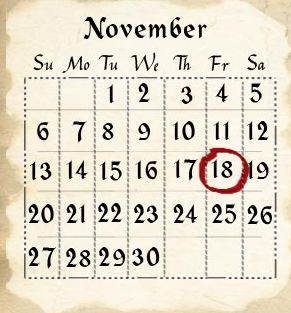November 18th: The U.S. and Canadian Railroads Institute a Five Standard Time Zone System that Eventually Becomes the Official Standard Time System
 This Day In History: November 18, 1883
This Day In History: November 18, 1883
The U.S. and Canadian railroads instituted a five standard continental time zone system on November 18, 1883, “The Day of Two Noons”, marking the beginning of the end for thousands of local times that were used by cities across North America at that point. Just one year later, 85% of all cities in Canada and the U.S. had voluntarily adopted the railroad’s time zone system: Eastern, Central, Mountain, Pacific, and Intercolonial. This system was proposed by William F. Allen, who at the time was the editor of the Traveler’s Official Guide where he made the proposal. Allen later became a very wealthy self-made businessman and served one term in the U.S. House of Representatives.
Before this point, most cities used their own time systems which were completely non-standardized, so that two cities a short distance apart might have very different ideas about what time it was at any given moment. Usually, the accepted time for a given city was based on a well-known clock, like a large clock on a clock tower or the like. Railroads initially tried to get around the problem by simply setting their own times, which differed from company to company and usually were based on whatever the time was at the company’s headquarters. This included using their own headquarter’s time for arrival and departure announcements at train stations across North America.
Obviously this was amazingly confusing for people trying to ride by train, particularly in major train stations that several different companies ran their trains through. For instance, in Pittsburgh, the major train station hub there had six different companies running through it, using six different time systems. Depending on what train you were taking, you’d have to check which company owned the train, then look at what their clock said. If your travel plans were at a much later date, you’d also have to figure out how their time related to your time in order to figure out the necessary departure or arrival times, so you showed up at the train station at the correct time.
Interestingly, when the new system was adopted, Detroit couldn’t decide what time zone to go with as they were between Central and Eastern zones. They first chose Central, then decided to go with their own local mean time, then settled on Eastern, based on popular vote in 1916. In order to stop issues like this and to get the rest of the cities that hadn’t already adopted these time zones to do so, the U.S. Congress stepped in on March of 1918 and enacted the Standard Time Act, which set the time zones into U.S. law and enacted Daylight Saving Time, the latter of which was shortly thereafter repealed and then later re-established during World War II.
Expand for References| Share the Knowledge! |
|




